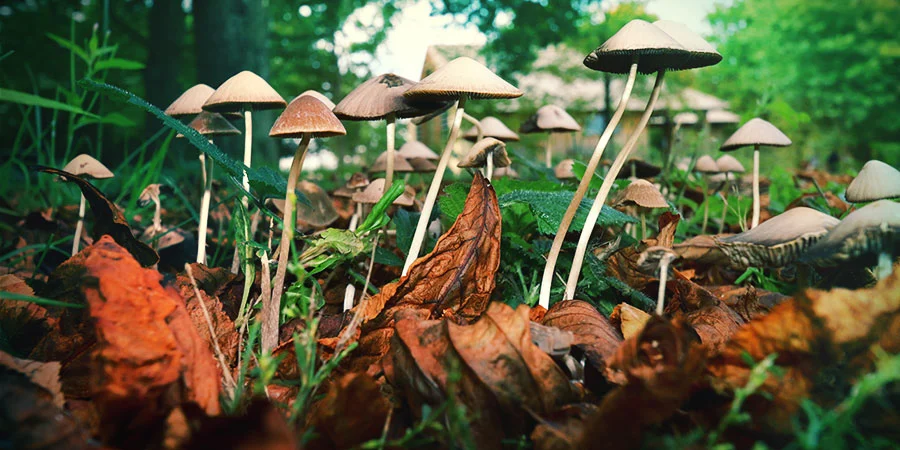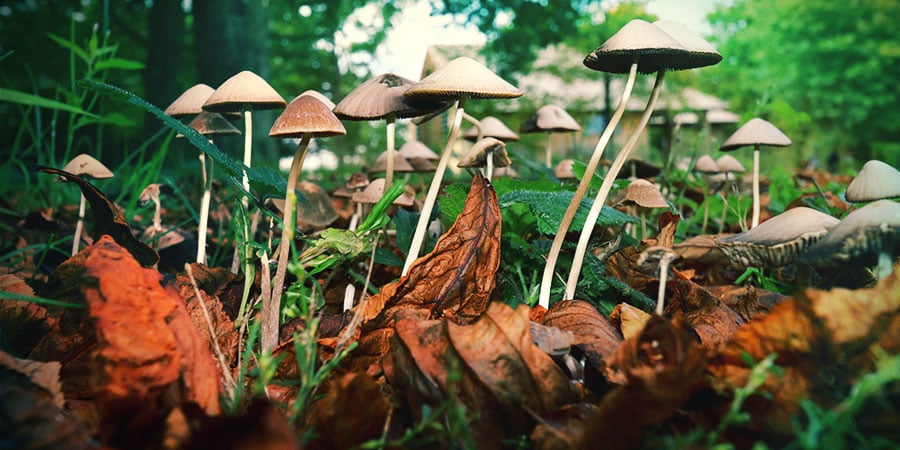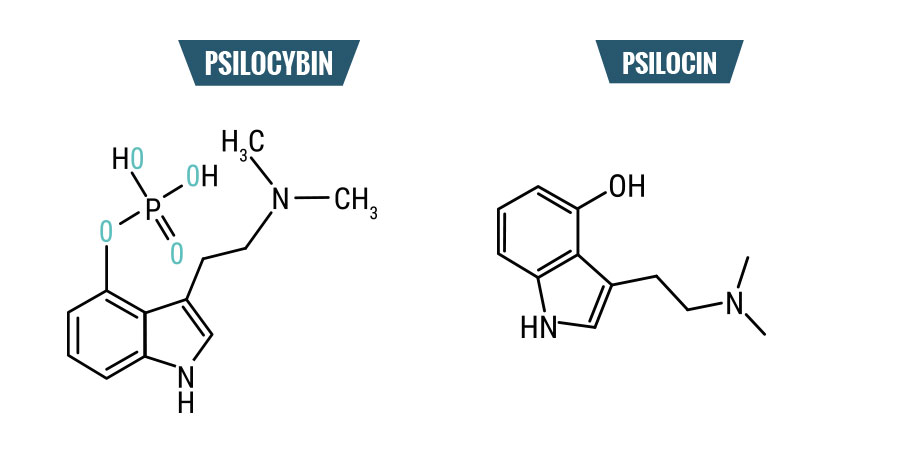
Psilocybin VS. Psilocin: The Differences. Psilocybin and psilocin both play a role in your psychedelic journey, but what is the difference between them?
Understanding magic mushrooms can be a tricky business. Unless you are well versed in chemistry, coming to grips with the interactions of the psychoactive compounds it contains can be a daunting task, and even then, there is still much to learn. To help spread a bit of knowledge, we are going to take a look at the difference between psilocybin and psilocin, the two main compounds responsible for a magic mushrooms trip.
THE MAIN DIFFERENCE BETWEEN THE TWO

So what is the difference? Well, it mainly comes down to the way the body interacts with both compounds. Both psilocybin ((O-phosphoryl-4-hydroxy-N) and psilocin (4-hydroxy-N,N-dimethyl-tryptamine) are equally psychoactive, but it is actually psilocin that is largely responsible for the high mushrooms cause. This is because the main method of taking mushrooms is oral ingestion, and any psilocybin that is ingested is broken down to psilocin in the digestive track by the enzyme alkaline phosphate. We know that psilocybin is just as psychoactive, as scientific research often uses other methods of dosing that bypass the digestive tract, maintaining the structure of psilocybin within the body but still having the same effect.

Both psilocybin and psilocin occur naturally within magic mushrooms, but outside of the body, psilocin is very unstable, and is quickly degraded when exposed to heat or oxygen. This is why fresh magic mushrooms bruise so easily when they are picked – it is the psilocin held within reacting and degrading.
Don’t worry though! Bruised mushrooms are still plenty potent, as the psilocybin they contain is much more stable. Plus, the natural levels of psilocybin within magic mushrooms are much higher than psilocin, with only a trace amounts of the latter being present. What this means is that potential potency loss from degraded psilocin is negligible. It is for this reason that lab research uses psilocybin rather than psilocin, as the stability of psilocybin offers much more versatility while still reacting the same way with the body and mind.
Eventually, the body breaks down the psychoactive substances using mono-amino oxidase enzymes, where they are then safely excreted from the body.
So as you can see, the main difference comes down to a question of stability, and how the body processes each compound. The trip is still the same, no matter which is taken. So kick back and enjoy the colours!
